Elon Musk upbeat on Starship test flights
- Published
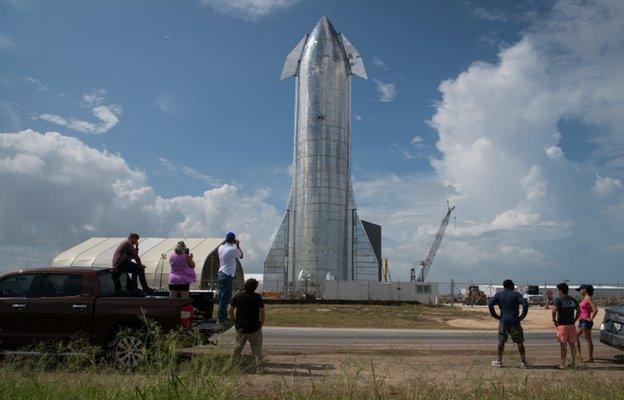
The Mk1 Starship will begin high-altitude tests in the coming weeks

The American entrepreneur Elon Musk has given a further update on his Starship and Super Heavy rocket system.
He plans to use the new vehicles to send people to the Moon and Mars, and also to move them swiftly around the Earth.
The SpaceX CEO is in the process of building prototypes and plans to start flying them in the coming months.
The Mk1 version of his Starship would begin high-altitude tests in the next one to two months, he said.
"This is the most inspiring thing I've ever seen," the entrepreneur told an audience gathered at the company's Boca Chica, Texas, facility where the prototype has been assembled.
"So this thing is going to take off, fly to 65,000ft, about 20km, and come back and land. So that giant thing, it's really going be pretty epic to see that thing take off and come back."
The 50m-tall Starship will eventually fly atop its booster, the Super Heavy.
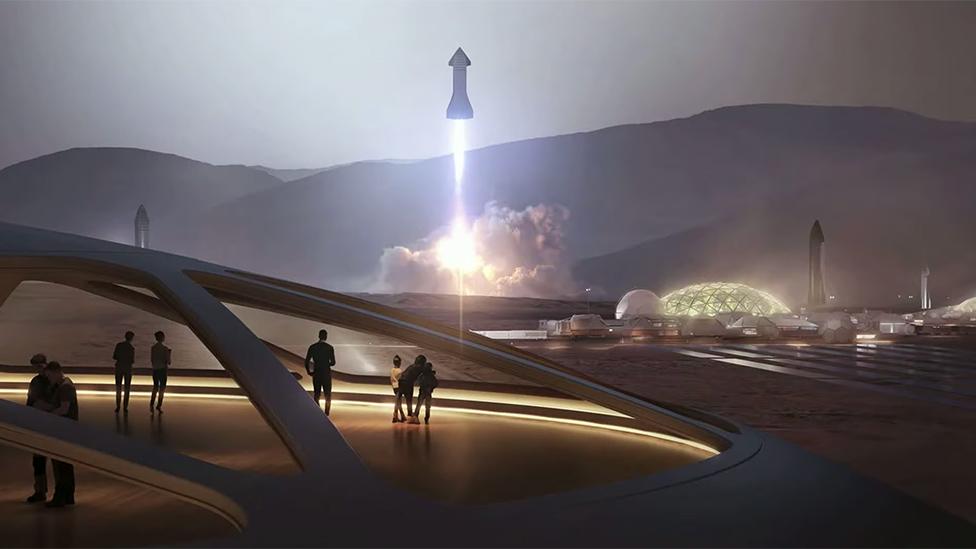
Artwork: Earth's problems should not stop us looking outwards, says Mr Musk
A first test flight of this booster, carrying a Mk3 Starship, could go to orbit as early as next year, Mr Musk said.
"This is going to sound totally nuts, but I think we wanna try to reach orbit in less than six months. Provided the rate of design improvement and manufacturing improvement continues to be exponential, I think that is accurate to within a few months."
Both parts of the new rocket system, which together will stand 118m tall on the launch pad, are being designed to be fully reusable, making propulsive landings at the end of their mission.
Mr Musk is well known for his aggressive scheduling, which even has a name: "Elon time".
The scheduling often slips, but eventually he does tend to deliver.
Allow X content?
This article contains content provided by X. We ask for your permission before anything is loaded, as they may be using cookies and other technologies. You may want to read X’s cookie policy, external and privacy policy, external before accepting. To view this content choose ‘accept and continue’.

Mr Musk has given updates on the development of the new rocket system at regular intervals. He wants these future vehicles ultimately to replace his current fleet - the Falcon 9 and its bigger cousin, the Falcon Heavy.
He already has one customer on the books for a Starship flight - the Japanese Billionaire Yusaku Maezawa, who desires to go around the Moon and back with a group of artists.
Allow X content?
This article contains content provided by X. We ask for your permission before anything is loaded, as they may be using cookies and other technologies. You may want to read X’s cookie policy, external and privacy policy, external before accepting. To view this content choose ‘accept and continue’.

Speaking at the Boca Chica event, the CEO outlined his latest thinking on the use of materials, changes in aero surfaces and the progress being made with the methane-burning Raptor engines that will power both the Starship and the Super Heavy.
The SpaceX boss explained his switch to using stainless steel over carbon fibre in building the Starship was in part down to cost. Steel is $2,500 per tonne whereas carbon fibre is $130,000 per tonne.
But he also championed the performance of steel at both low and high temperatures.
The Starship will feature heat-resistant "glass" tiles in those areas likely to experience the highest temperatures during a descent back through the atmosphere.
He also pointed to the four fins - two at the front, two at the rear - that will help control that re-entry; and to the Raptor engines. The Mk1 prototype has three, but operational versions will have six.
The Super Heavy booster, on the other hand, could have up to an extraordinary 37 Raptors all firing in unison.
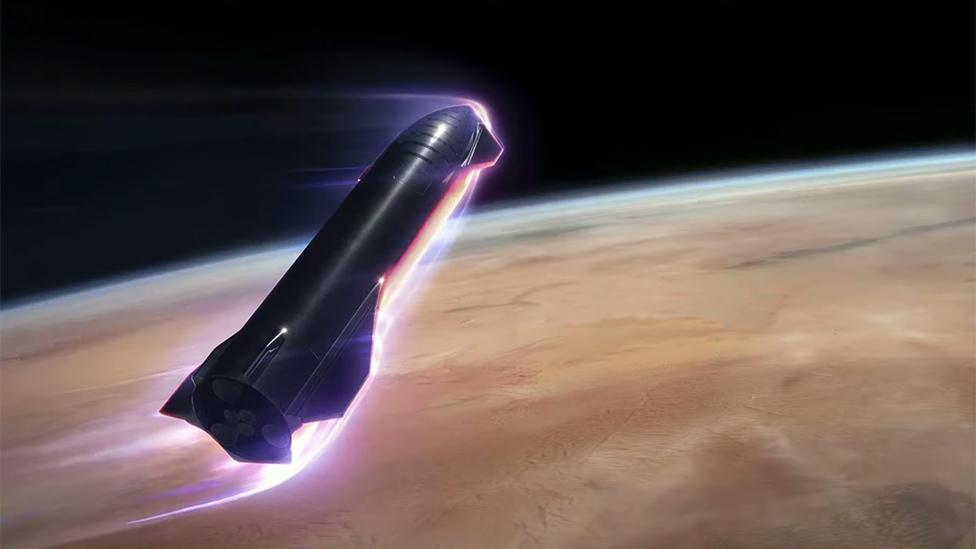
Artwork: The Starship will need heat-resistant tiles on its leading surfaces for re-entry
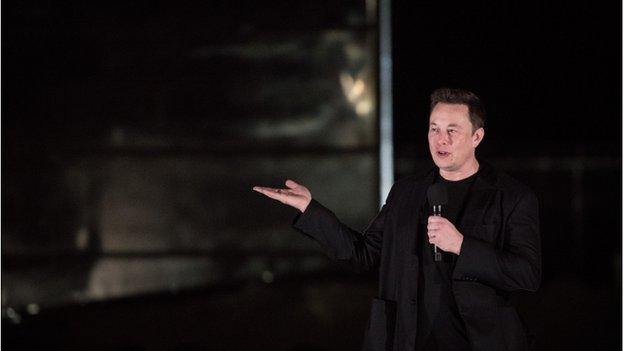
SpaceX CEO Elon Musk gives an update on the next-generation Starship spacecraft
Mr Musk will be using Cape Canaveral in Florida for some launches, but Boca Chica also features in his flight plans.
This, he recognises, would mean considerable disruption for local residents, and the SpaceX company is therefore trying to buy them out.
"We've made an offer to that effect," he said.
Mr Musk has been criticised in the past for obsessing about going to Mars when there are many issues that need attention here on Earth.
He told his audience that the problems on our planet were not a reason to stop looking outwards.
"There are many troubles in the world, of course, and these things are important and we need to solve them. But we also need things that make us excited to be alive, that make us glad to wake up in the morning and be fired up about the future, and to think, yeah, the future is going to be great. Space exploration is one of those things."
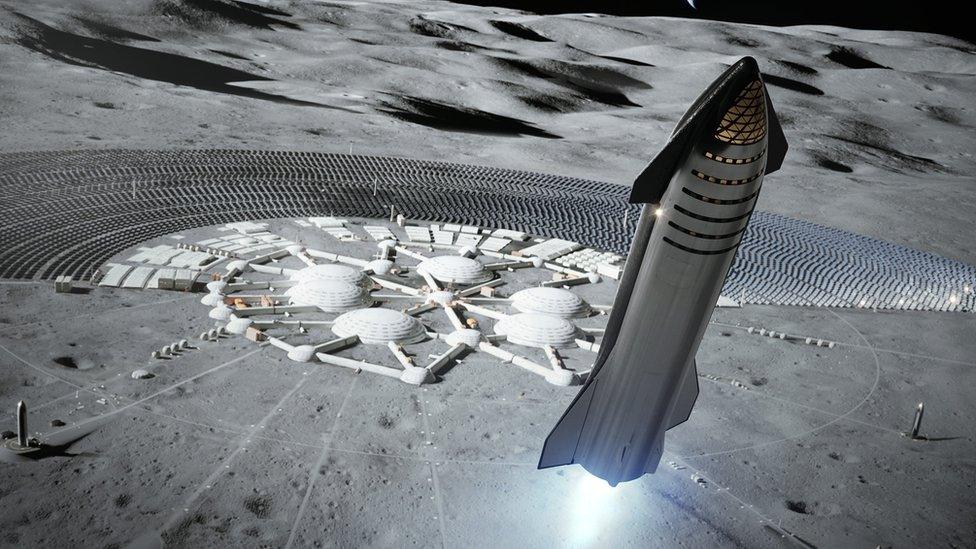
Artwork: Mr Musk says a Starship could put 100 people on the Moon

SpaceX artwork envisions Starship missions going further out across the Solar System
The Administrator of the US space agency, Jim Bridenstine, put out an interesting tweet on the eve of the Boca Chica event in which he said he hoped the same enthusiasm shown for the Starship would not distract SpaceX from its Nasa commitments.
The company is contracted to the agency to deliver a Falcon rocket and Dragon capsule system capable of taking astronauts to the space station. This system is several years behind schedule.
Asked to respond to the tweet, Mr Musk said the Starship and the Super Heavy booster were drawing on less than 5% of SpaceX resources.
"Our resources are overwhelmingly on Falcon and Dragon, especially crew Dragon," he emphasised.
Allow X content?
This article contains content provided by X. We ask for your permission before anything is loaded, as they may be using cookies and other technologies. You may want to read X’s cookie policy, external and privacy policy, external before accepting. To view this content choose ‘accept and continue’.
